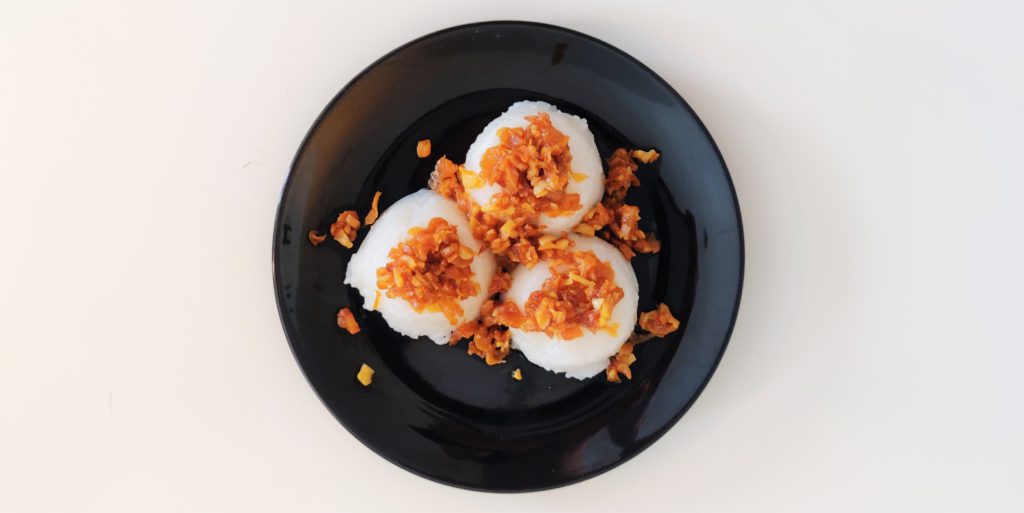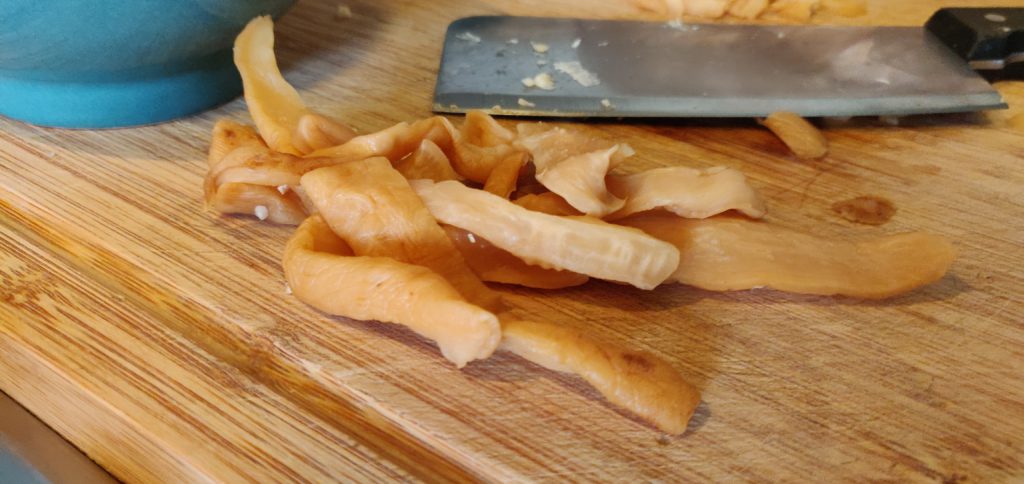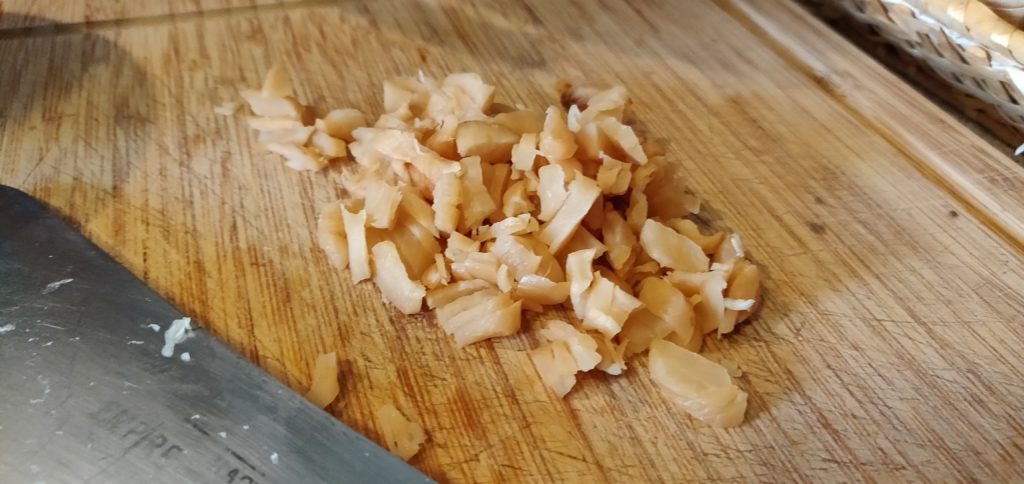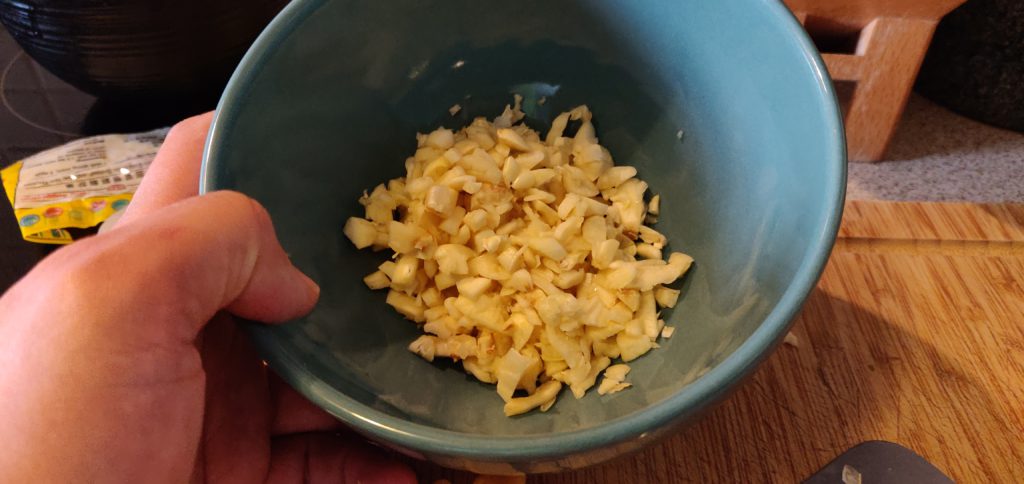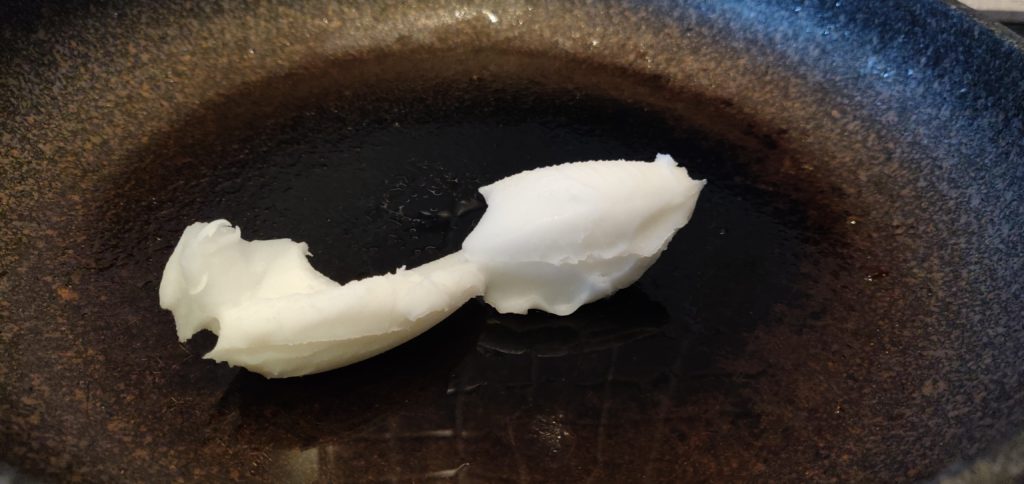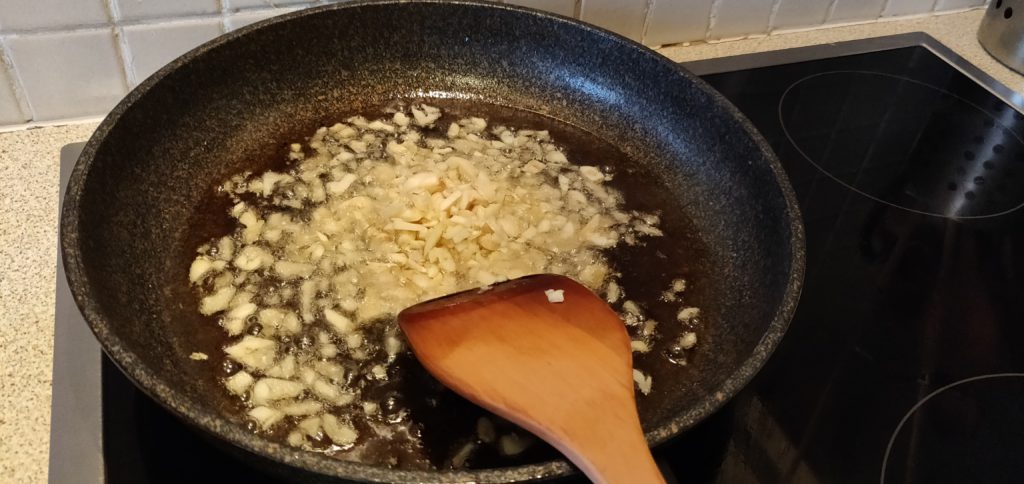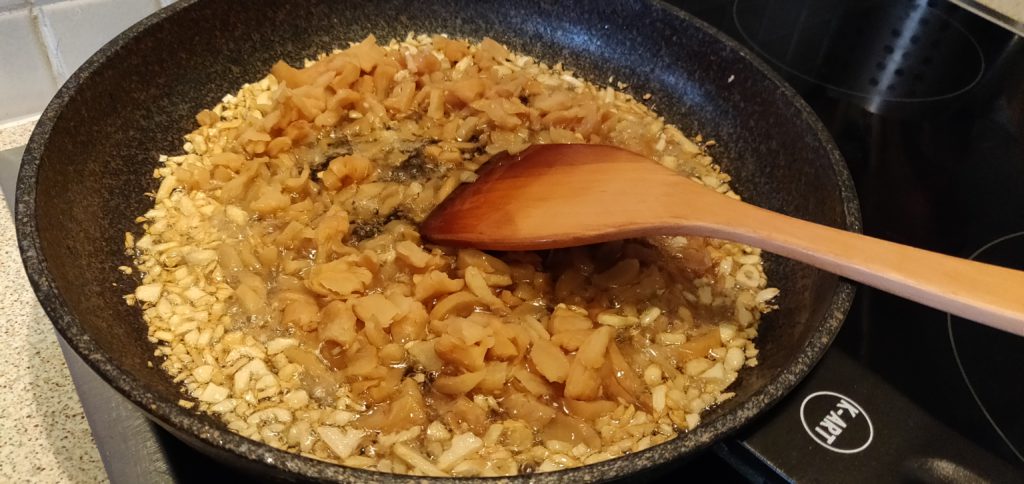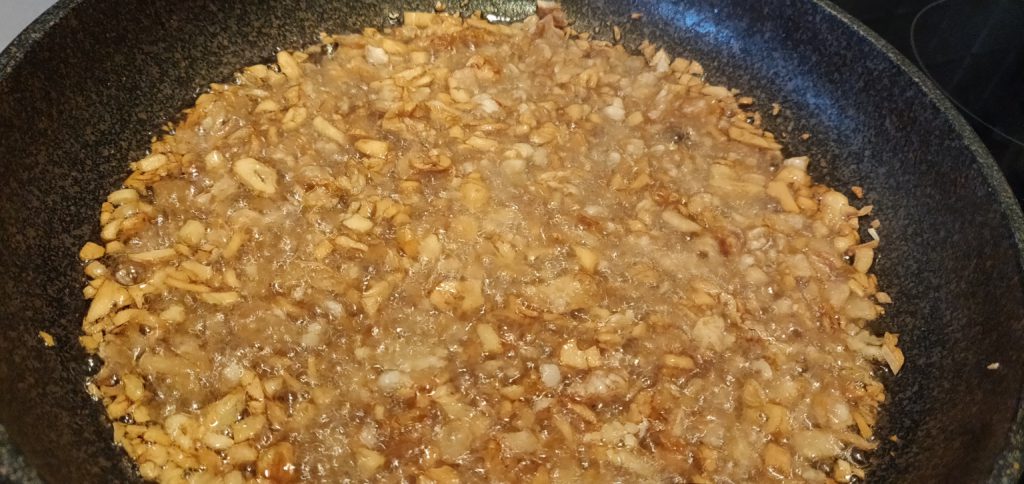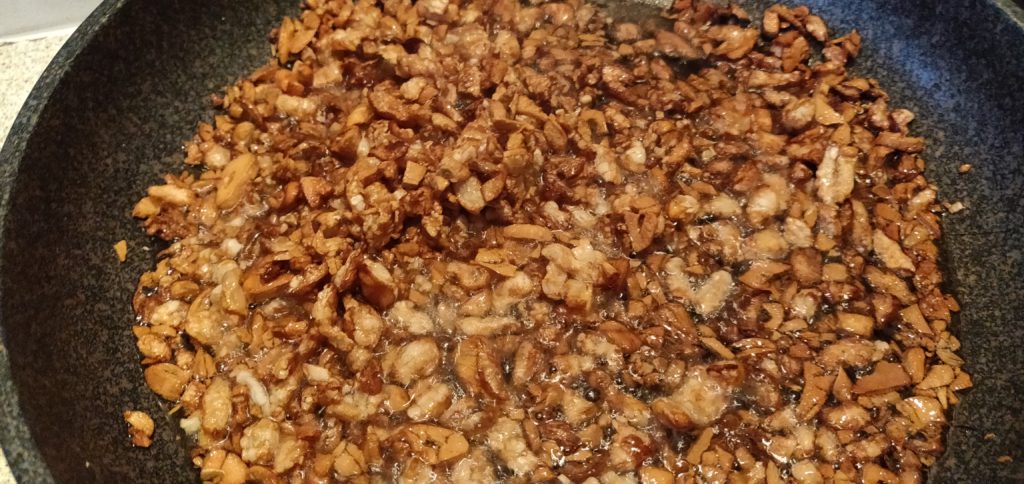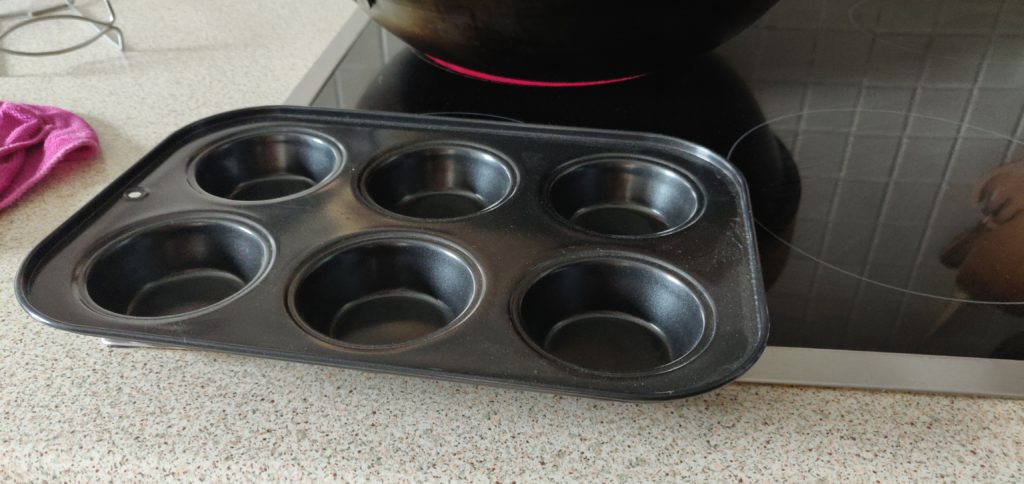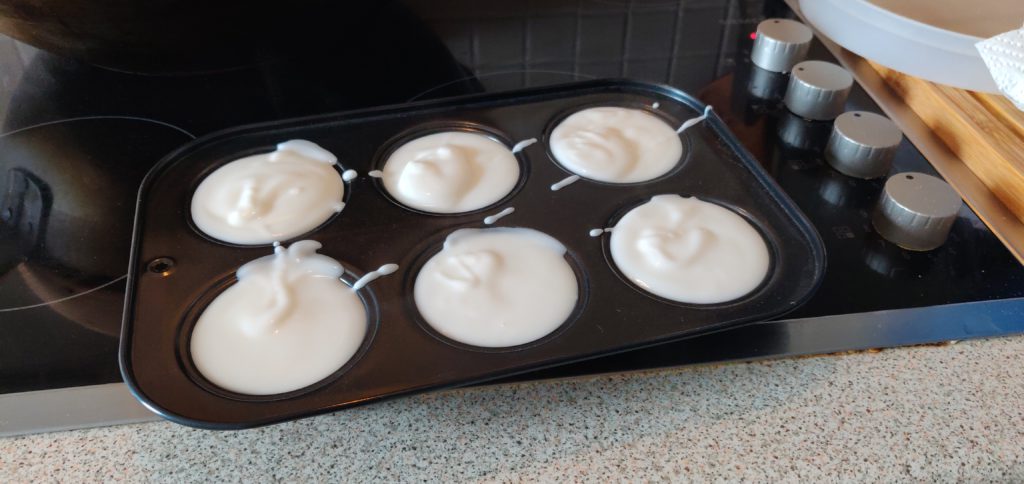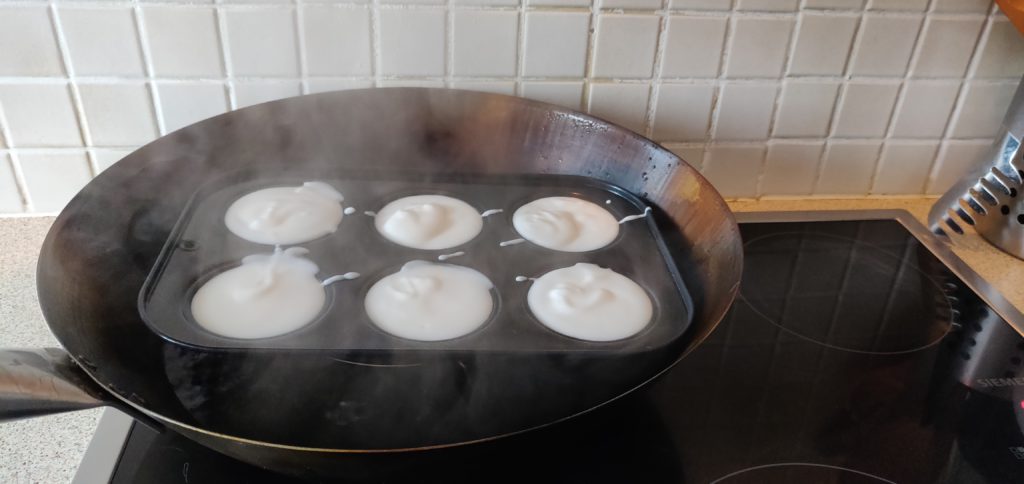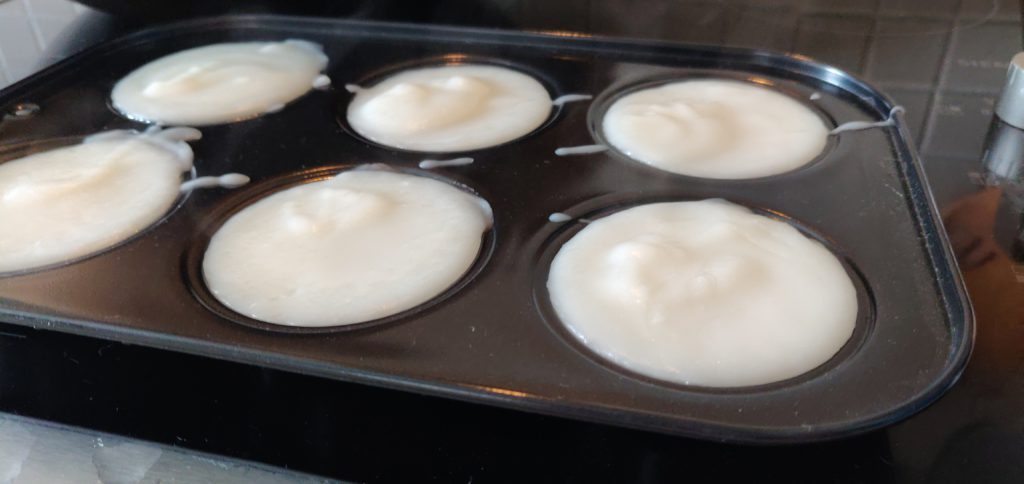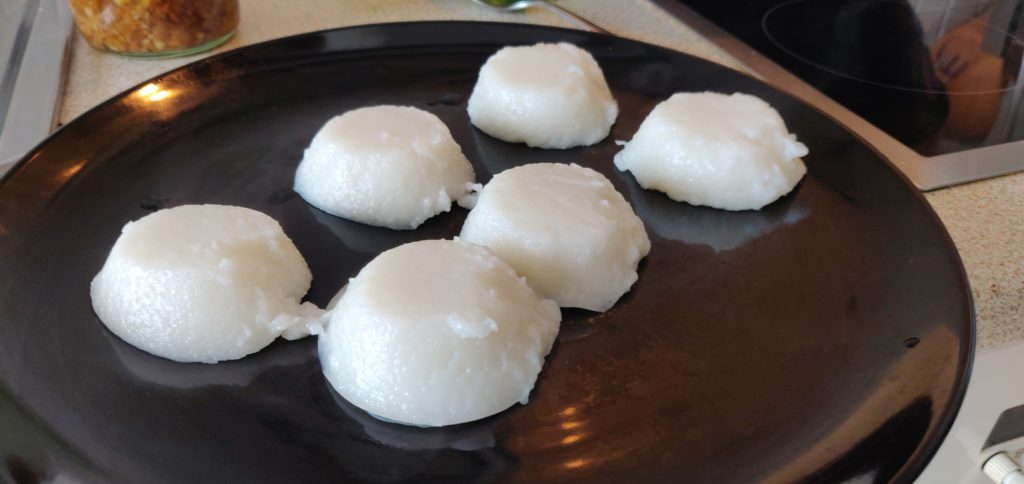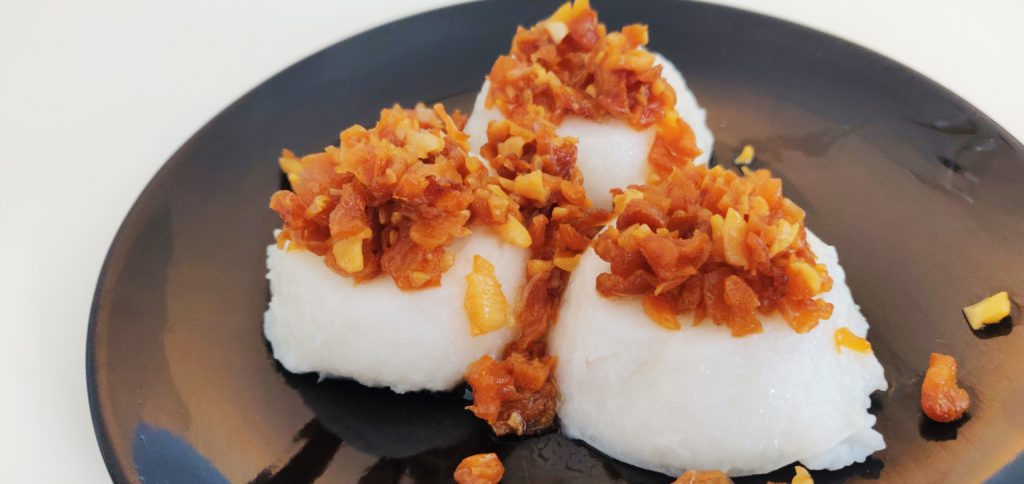Originally from a Chinese Teochew 潮汕 streetfood, “Tsuiguey” 水粿 – also spelled “Chwee Kueh” is likewise popular in Singapore and Malaysia as a breakfast food. Tsuiguey are in fact small steamed rice cakes, topped with a kind of stir-fried fermented daikon called “Tsaibor” 菜脯.
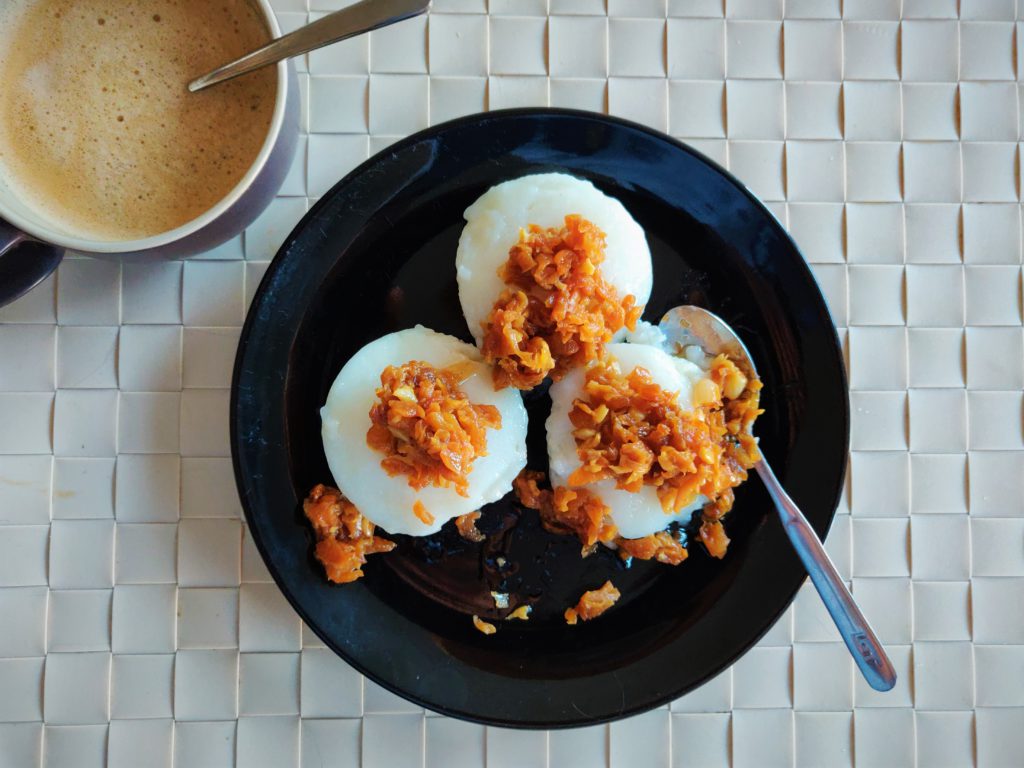
What is “guey” 粿?
Also spelled “kueh”, it is an ancient Chinese word still used by the Minnan people (speaking current forms of Hokkien, Teochew and Hainanese) that means “steamed cake made of rice flour”.
This can take any form, such as pieces of flat rice flakes used in “Kuay Chap” 粿汁, or handmade rice noodles known as “Kway Teow” 粿条. In this recipe, we are going to put them into small mould used for cupcakes.

What is “tsaibor” 菜脯?
Daikon 白萝卜 are eaten throughout East Asia. In Singapore they are mistranslated into “radishes” but they are NOT radish. It is a Minnan tradition, practised throughout the vast Minnan territories – in the Chaoshan Teochew region, the Fujian Hokkien region as well as in Taiwan – to make “tsaibor” 菜脯 out of daikon.
Daikon are first cleaned and salted, and laid in the sun to get rid of their moisture. They will then shrink to almost a tenth of their original size. After that, they are placed in earthern jars to undergo fermentation in order to help with the preservation.
A well-fermented tsaibor can last more than 30 years.
Once fermented, tsaibor ranges from light to dark brown, depending on the level of fermentation.
Tsaibor is generally used as a condiment. You can cut it in slices and serve as a sidedish to a meal. You can also dice it very finely to add to a stir-fried meat or vegetable dish to add flavour. In this dish, we are going to prepare it as a topping to our Tsuiguey 水粿 as “tsaibor liab” 菜脯粒.
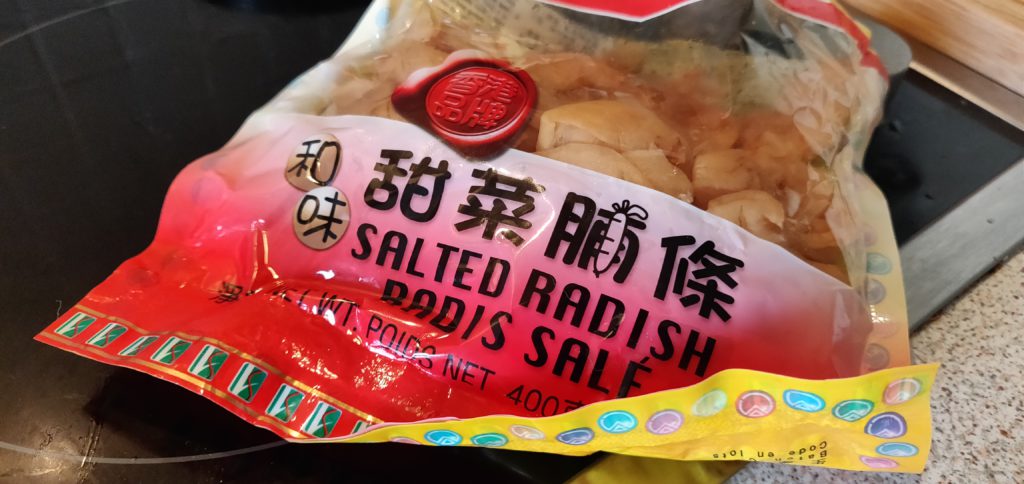
There are two types of tsaibor you can buy in a Chinese supermarket: normal and sweet. Normal tsaibor is salty, while “sweet” tsaibor is less so. You can sometimes find them already finely diced, but mostly they are sold in their original tubular shape. If you cannot find sweet tsaibor for this dish, just soak your regular one in water to an hour to get rid of the extra salt content.
Pork lard: I am using pork lard in my recipe because this was used traditionally. When I fry garlic in it, I find the smell heavier and the taste stronger than normal vegetable oil which tends to oxidise quickly.
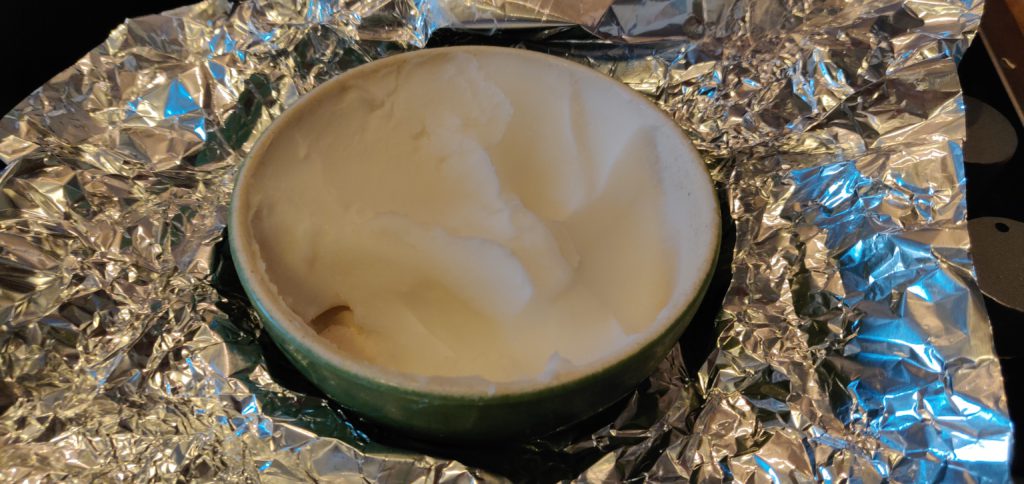
Ingredients for the Tsuiguey:
- 150g rice flour (粘米粉)
- 1 tbs wheat starch (澄粉)
- 100ml cold water
- 560ml hot water
- Half tsp salt
- 5 tbs vegetable oil
Ingredients for the Tsaibor topping:
- 200g “sweet” Tsaibor (甜菜脯), finely chopped
- 1 full bulb of fresh garlic, finely chopped
- 1 tps dark soy sauce
- 2 tbs sugar
- 5 tbs vegetable oil/pork lard
What you need:
- Steamer stand to be placed in a wok
- A cupcake mould of six if you cannot find proper Tsuiguey moulds.
- Silicon spatula
- Toothpick
Serving: 12 for 3 persons
Instructions:
- First prepare the Tsaibor topping. Finely chopped your tsaibor and garlic. Set aside.
- Heat up the oil in your pan on low heat. First stir-fry the garlic until fragrance is released, then add in your diced tsaibor. Keep the heat to low as tsaibor tend to burst when it get fried.
- Once the colour of both tsaibor and garlic blends into one another in a light brown, it means both are sufficiently cooked. Add in the sugar and make sure it is melted and mixed in. Then add the dark soy sauce to add a nice brown tinge to the topping.
- Set the topping aside.
- Then prepare your Tsuiguey. Mix the rice flour, wheat starch, oil, salt with cold water. Once they are well mixed, add hot water to thin the paste.
- Prepare your wok for steaming. Grease the inside of your cupcake mould and pour the mixture into the mould.
- Steam on high heat for 20 minutes.
- Remove the mould from steamer. Carve the sides each cooked Tsuiguey with a toothpick then remove carefully using a small silicon spatula. Do so well the Tsuigueys are hot, otherwise they will stick more to the sides when cooled.
- Repeat the process until the mix is finished.
To serve, place 3-4 Tsuiguey on a plate. Place the Tsaibor topping on each. Serve warm.
Note:
- If you cannot finish your Tsuiguey, you can certainly freeze them for later use. To warm up your Tsuiguey in a microwave, place them in a covered glass container and heat for 50 seconds.
- Likewise, I place my leftover Tsaibor topping in a glass jar and leave it in the fridge. To use them for my Tsuiguey later on, I just heat the whole jar in a microwave for about 20 seconds.
- This recipe is not mine. It originally came from Wendy Chun and modified by Guai Shu Shu.
